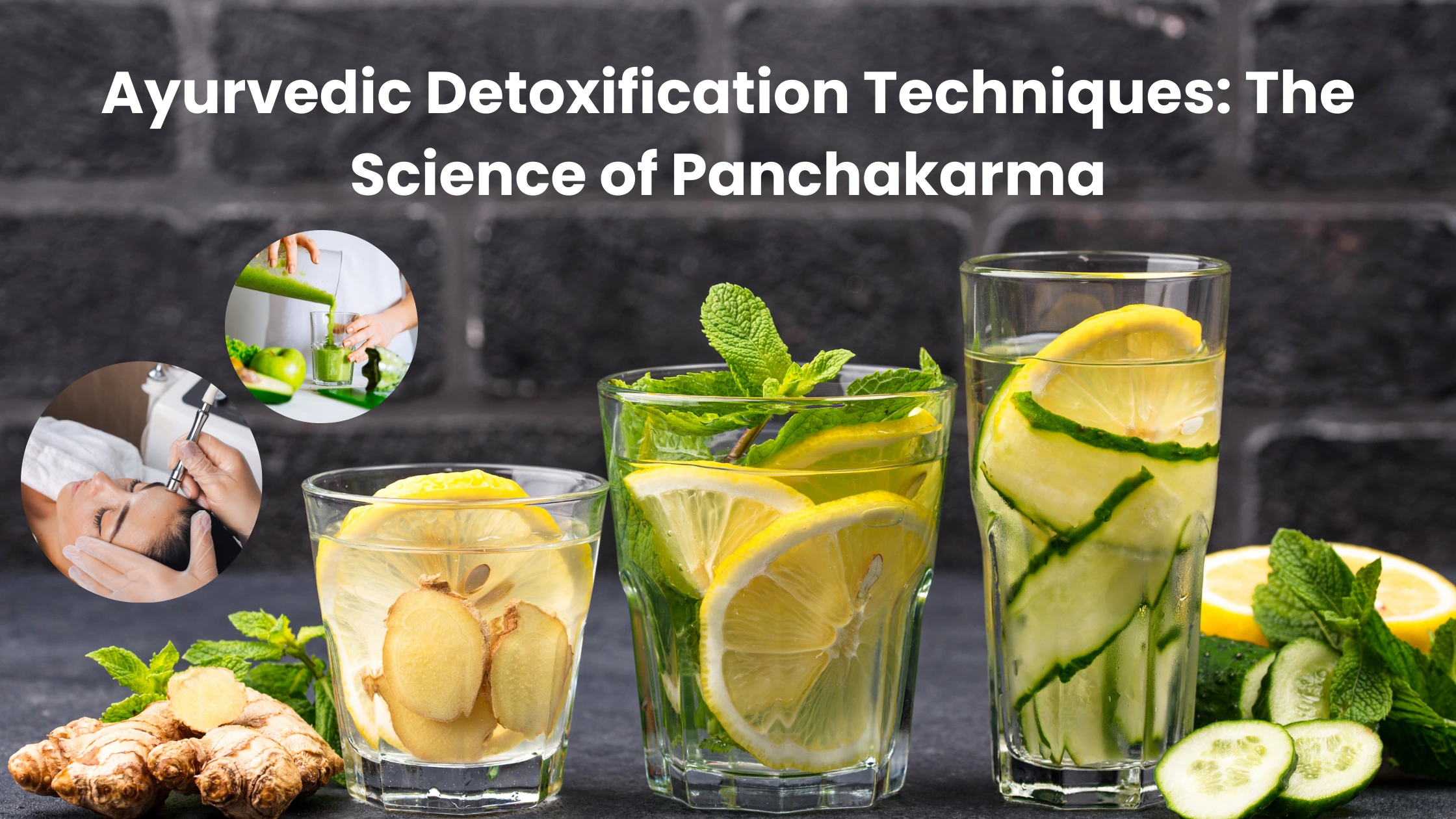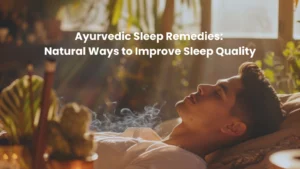Exploring how Panchakarma cleanses the body and mind, and its benefits in modern life.
Panchakarma is the traditional form of detoxification of the body and mind that facilitates rejuvenation. It has been utilized for thousands of years as a method of staying healthy, young, and vital.
Today’s hectic lifestyles almost inevitably mean that our bodies are exposed to substances they are not equipped to deal with, or which are even toxic. The toxins are accumulated as a result of an improper diet, lifestyle and lack of spiritual and emotional wellbeing. If we are overburdened with these kinds of toxic substances, they can begin to accumulate with a detrimental impact on our health and overall well-being.
The main objective of the Ayurvedic system of treatment is to restore the original state of equilibrium between the doshas.
Panchakarma is a method of cleansing the body of all the unwanted waste. Panchakarma treatment is unique in the sense that it includes preventive, curative and promotive actions for various diseases.
Need of Panchakarma:
Due to inappropriate lifestyle and poor metabolism, it is common to build-up of metabolic products that have not been adequately broken down; these are also known as “Aam” in Ayurvedic medicine.
From an Ayurvedic perspective, such toxins and residues i.e. Aam, effectively clog up vital physical channels, thus inhibiting the free flow of dhatus throughout the body. The consequence results in disturbances of equilibrium which results in various diseases.
Panchakarma enables targeted Dosha eradication, aligning with Ayurveda’s concept of Dosha Pratyanik Chikitsa. Each process within Panchakarma has the capability to remove morbid materials from the body, with specific efficacy for certain Doshas. Eg. Vaman for Kapha, Virechana for Pitta, basti for Vata.
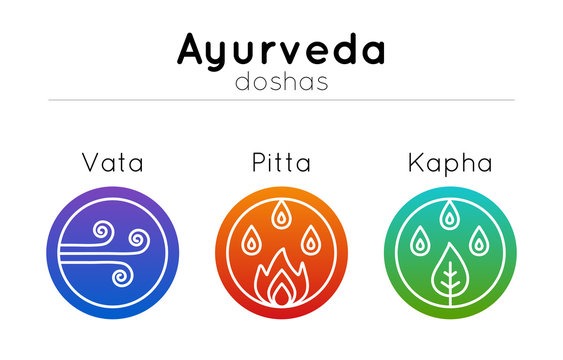
Science behind Panchakarma – Basic principles:
Panchakarma, derived from the Sanskrit words “pancha” meaning five and “karma” meaning action, is a traditional Ayurvedic therapy that aims to cleanse and rejuvenate the body, mind, and spirit. It has its roots in ancient Indian medicine and has been practiced for thousands of years. The significance of Panchakarma lies in its ability to balance the three doshas – Vata, Pitta, and Kapha – which are considered the fundamental energies responsible for maintaining health and well-being in Ayurveda.
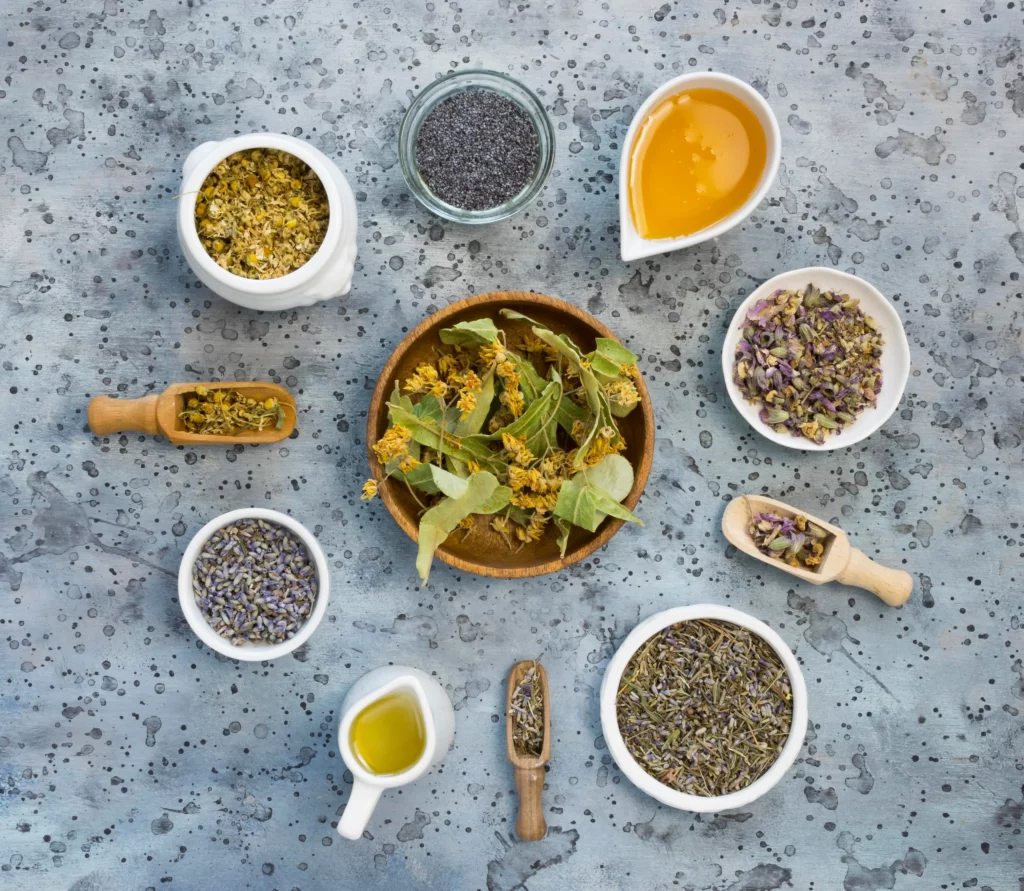
Shamana and Shodhana are two primary therapeutic approaches in Ayurveda. Shamana focuses on pacifying and balancing the doshas through diet, herbs, and lifestyle changes, while Shodhana involves detoxification and purification methods to eliminate toxins from the body.
Shamana therapy is ideal when the dosha imbalance is mild and can be managed through non-invasive methods like dietary adjustments, herbal remedies, and lifestyle changes. It is suitable for maintaining health and preventing disease.
Shodhana therapy, on the other hand, should be considered when there is a significant accumulation of toxins in the body, requiring more intensive cleansing processes such as Panchakarma to restore balance and health.
Shodhana therapies are more intensive and go beyond pacifying doshic imbalances. They actively eliminate toxins from the body.
Panchakarma works as a comprehensive detox for your body, working on a cellular level to cleanse and flush out accumulated toxins. More than just a superficial cleanse, Panchakarma goes deep, also resetting the intricate patterns of your body.
Indications of Panchakarma:
The principles behind Panchakarma revolve around the concept of removing accumulated toxins from the body and restoring optimal health. This therapy focuses on the root cause of illness rather than just treating symptoms. By addressing imbalances in the doshas, Panchakarma helps to remove toxins, normalize bodily functions, and enhance the body’s natural healing abilities.
The presence of abnormal levels of metabolic toxins in the body can lead to the blocking of energy channels of the body resulting in a weak immune system. This is why it is important that toxins be removed from the body periodically so that the body is cleansed and rejuvenated. This can help ensure optimal health. Panchakarma treatment in Ayurveda is one of the most effective ways to detox the body and help in rejuvenation.
Panchakarma helps in the thorough purification of the body, removing accumulated toxins and waste products from various tissues and organs.The therapy facilitates the elimination of harmful toxins, promoting better health and preventing the onset of diseases. Panchakarma can revitalize the metabolism, optimizing the body’s ability to process nutrients and maintain energy levels.
Contraindications:
Panchakarma treatment can be demanding both physically and mentally. Consequently, it is not something to be entered into at any time. In fact, for some people, it is entirely inappropriate, for example, children. In addition, anyone who feels physically weak or who is dealing with the after-effects of an illness or operation.

Steps in Panchakarma:
Panchakarma treatment is a specialized Ayurvedic therapy that involves the internal purification of the body through five specially designed procedures.
The complete process of Panchakarma consists of three steps.
Poorva Karma –
- Deepana-pachana – some oral administration of digestive herbs to increase Agni (the digestive fire) and liquefy the toxins so they can be removed easily from the body are given before poorvakarma.
- Poorvakarma which is the preparatory procedure required before the main procedure to enable a person to receive the full benefits of the main treatment. It consists of two main processes – Snehan (oleation) and Swedan (fomentation). These methods help to dislodge the accumulated poisonous substances in the body, thus preparing them for their complete removal.
- Internal Oleation is the administration of medicated ghee internally. Ghee is administered in increasing doses for 3-7 days. The type and dose of medicated ghee depend upon the disease condition and nature of the patient.
- External Oleation means body massage using specific oils. It can be done for the entire body or just specific parts. Oils are selected as per the disease condition.
- Oleation helps the toxins to move toward the gastrointestinal tract. It also softens the superficial and deep tissues and nourishes the nervous system.
Pradhan Karma or the main procedure –
On completion of the first step, it is decided which of these are procedures to be done depending upon the type of the accumulated doshas.
Panchakarma therapy consists of five cleansing aspects:
- Emesis (VAMANA)
- Purgation (VIRECHANA),
- Medicated enemas (BASTI)
- Medicated nasal oils (NASYA)
- Toxic bloodletting (RAKTAMOKSHAN)
- Vamana – Vamana is a guided emesis, which expels the accumulated toxins through vomiting. The best time to practice is during late spring or early summer (Kapha provoking time)
- Virechana – Purgatives eliminate excess Pitta from their site in the liver, gallbladder, and small intestine. This purification therapy is preferred for Pitta and liver disorders (e.g., gallstones). According to Ashtanga Hridayam, the time of purgation is after Vamana (emesis). Similar preliminary treatments of Snehana and Svedana are incorporated and post that the therapy is performed.
- Basti – Enema is half of the medicinal therapy, or even the complete treatment. Basti therapy is primarily used for excess Vayu, either alone, or if the predominant dosha is deranged. The colon is related to all other organs and tissues, so by cleansing and toning the colon, the entire body is healed and rejuvenated. The colon is the main organ that absorbs nutrients. A healthy, functioning colon is imperative for proper assimilation of nutrients.
- Nasya – Ayurveda suggests that the nose is the gateway to the head. Thus, nasal herb therapy is used for healing diseases of the throat, neck, head, and senses (e.g., ears, nose, eyes, etc.). Nasya is also used for toning and strengthening these areas. It is known to improve vision, smell, and hearing, prevent greying hair, hair fall, stiff necks, headaches, and lockjaws.
- Raktamokshana – Therapeutic toxic bloodletting (Raktamokshana) involves releasing toxic blood from various body sites. The impure blood is let out as It causes various skin and body illnesses. 2 to 8 ounces is the general amount of the release. Bloodletting is useful when wishing for immediate results with Pitta disorders such as skin, liver, spleen, and conditions like gout, headaches, and hypertension. Late summer through early fall is the best time for this procedure.
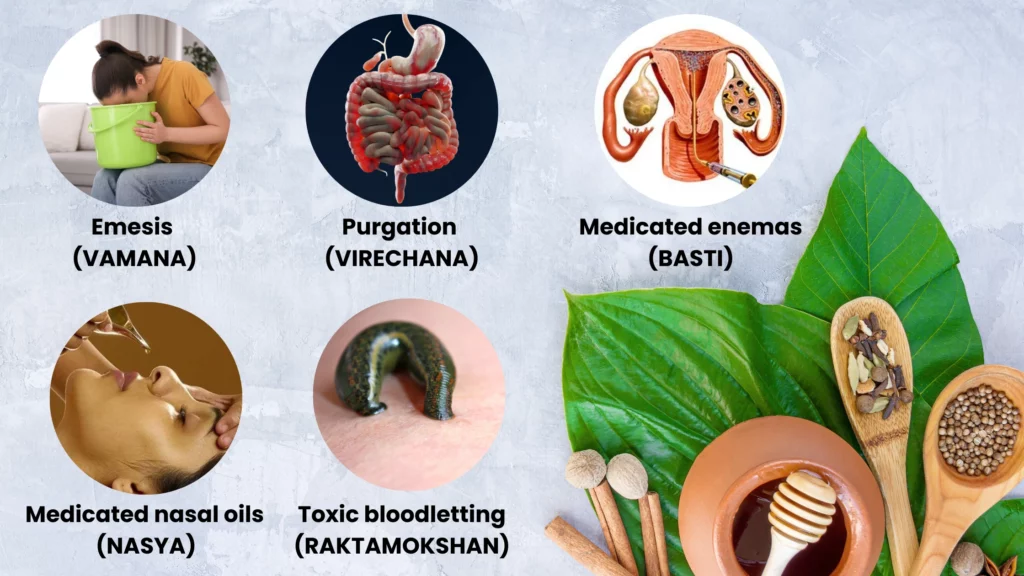
Paschaat Karma or the post-therapy dietary regimen to restore the body’s digestive and absorptive capacity to its normal state
This is a post-purification regime to restore digestive power and bring normalcy to the body. It is done through specific diet, lifestyle management, rejuvenating medicines, and specific herbal preparations. It includes –
- Sansarjan Karma: It is a specific diet protocol aiming to gradually increase diet from liquids to semi-solids to a normal diet.
- Administration of Rasayan: taking a rejuvenating medicine as per your condition is used to help physically restore the body.
- Shaman Chikitsa: adding appropriate Ayurvedic medicine may help further reduce the disease symptoms.
Benefits of Panchkarma Therapy:
- Purification of the Body and Soul: This therapy is the ultimate solution to get rid of all impurities and toxins from the body and thus purifies the mind, body and soul.
- Basis for Complete Wellbeing: Panchakarma therapy is one of the finest ways to achieve a healthy and stress-free body.
- Balancing the vitiated doshas: As per Ayurveda, doshas are the main governing factors of the human body. It is due to the imbalances in these doshas that our body sometimes responds in an abnormal way, and we fall prey to various kinds of ailments. Panchakarma therapy thus helps to restore the balance between the doshas for proper functioning of the body. It helps to maintain a balance between all the three doshas that are responsible for governing our body.
- It strengthens your immune system.
- Panchakarma increases the strength of your mind, intellectual ability and mental clarity. It reverses the negative effects of stress on your body and mind.
An Ayurvedic detox may last 3–45 days,depending on the practices involved.
Depending on your dosha, you may receive one or more treatments. Proponents claim that the goal of Panchakarma is not only to remove toxins but also re-establish one’s mind-body unity.
Panchakarma is considered one of the most effective treatments in Ayurvedic therapy.
Even for healthy people, it is recommended to undergo this treatment once in every year to get rid the body of all the impurities and chemical toxins it accumulates over the years. In some cases, Panchakarma treatment alone can cure many chronic diseases that will not require any further treatments afterwards.
Author: Dr. Gayatri Kulkarni – Mulye
MD ( Ayurved)
Special proficiency in Gynecological disorders and Infertility.
Practicing since 12 years at Orthoved hospital, Dombivli,

